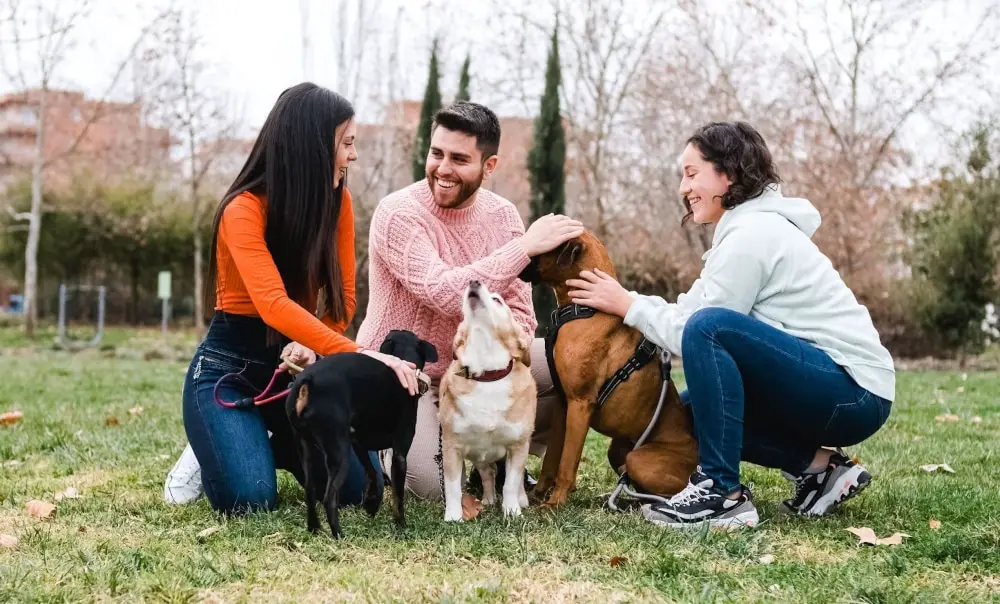Bringing a new puppy or dog into your home can be an exciting and fulfilling experience. However, it’s important to remember that a dog is a social animal and needs to be properly socialized to interact well with other dogs and people.
Socialization is a critical process that helps your dog develop positive behaviors and reactions towards new environments, people, and other animals. This article will provide you with tips on how to socialize your dog with other dogs and people.

Why Socialization is Important for Dogs
Proper socialization is crucial for dogs to develop good behavior and prevent aggression towards other dogs and people. Socialization helps a dog become comfortable and confident in new environments, making them less likely to become fearful or aggressive.
It also helps dogs to learn how to interact appropriately with other dogs and people, which can reduce the likelihood of conflicts and improve their overall well-being.
When to Start Socializing Your Dog
It’s important to start socializing your dog as early as possible. Puppies are most receptive to socialization between 3 and 14 weeks of age. However, socialization is an ongoing process and should continue throughout your dog’s life. If you adopt an older dog, socialization is still important but may take longer to achieve.
Tips for Socializing Your Dog with Other Dogs
- Start with calm and friendly dogs: When introducing your dog to other dogs, choose calm and friendly dogs that are well-behaved and vaccinated. Unvaccinated dogs can pose a risk to your dog’s health.
- Use positive reinforcement: Reward your dog with treats and praise when they behave positively towards other dogs. This will help reinforce good behavior and encourage your dog to continue interacting positively with other dogs.
- Gradually increase exposure: Start by allowing your dog to observe other dogs from a distance, then gradually move closer. Once your dog is comfortable, you can allow them to interact with other dogs under close supervision.
- Watch for signs of aggression: Be aware of your dog’s body language and watch for signs of aggression, such as growling or snapping. If your dog displays these behaviors, remove them from the situation and try again later.
- Practice regularly: Regular practice is essential for successful socialization. Plan regular playdates with other dogs to help your dog become more comfortable and confident around other dogs.
Tips for Socializing Your Dog with People
- Start with family and friends: Introduce your dog to family and friends first, as they are already familiar to your dog. Gradually introduce them to new people in different environments, such as parks or pet stores.
- Use positive reinforcement: Reward your dog with treats and praise when they interact positively with people. This will help reinforce good behavior and encourage your dog to continue interacting positively with people.
- Gradually increase exposure: Start by allowing your dog to observe people from a distance, then gradually move closer. Once your dog is comfortable, you can allow them to interact with people under close supervision.
- Watch for signs of fear or anxiety: Be aware of your dog’s body language and watch for signs of fear or anxiety, such as cowering or hiding. If your dog displays these behaviors, remove them from the situation and try again later.
- Practice regularly: Regular practice is essential for successful socialization. Plan regular outings with your dog to help them become more comfortable and confident around people.
Conclusion
Socializing your dog with other dogs and people is an essential process that requires patience, time, and dedication. Remember to start socializing your dog as early as possible, use positive reinforcement, gradually increase exposure, watch for signs of aggression or fear, and practice regularly. With these tips, your dog will develop positive behaviors and become a well-socialized and happy companion.
FAQs
What if my dog is older, can they still be socialized?
Yes, older dogs can still be socialized, but it may take longer and require more patience and persistence.
How can I tell if my dog is comfortable around other dogs?
Watch for signs of relaxation and playfulness, such as a wagging tail, open mouth, and playful behavior.
What should I do if my dog displays aggressive behavior towards other dogs or people?
Remove your dog from the situation and seek the help of a professional dog trainer or behaviorist.
Can socializing my dog prevent behavioral problems?
Yes, proper socialization can help prevent behavioral problems and improve your dog’s overall well-being.
How often should I socialize my dog?
Regular socialization is essential for successful socialization. Plan regular playdates with other dogs and outings with your dog to help them become more comfortable and confident around other dogs and people.
